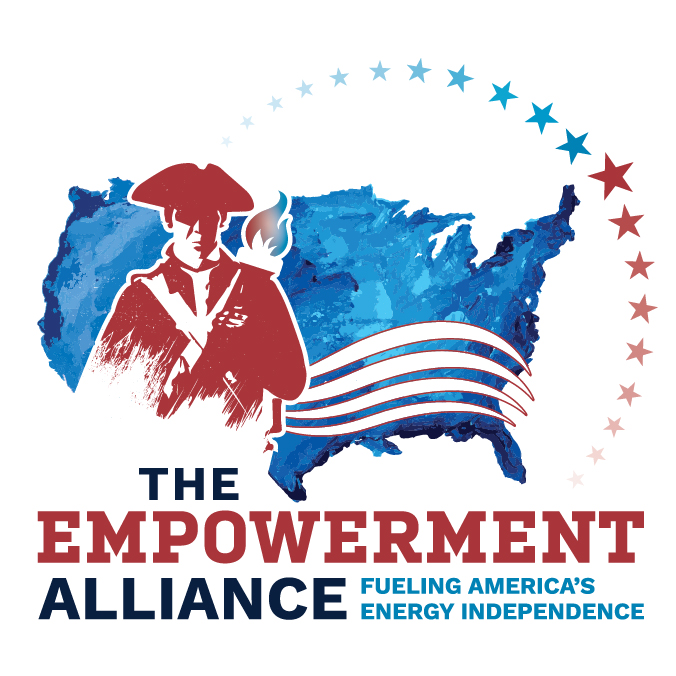Learn

RESEARCH & DATA
TEA: China, Rare Earth and Pollution Factsheet
TEA China Rare Earth and Pollution
China’s Near Monopoly on rare earth metals Fueled by Forced Labor and Cancer Villages
China Has A Near Monopoly On Both Supply And Processing Of Rare Earth Metals
“China supplied 80% of the rare earths imported by the United States from 2014 to 2017.” “Rising tensions between the United States and China have sparked concerns that Beijing could use its dominant position as a supplier of rare earths for leverage in the trade war between the two global economic powers. China supplied 80% of the rare earths imported by the United States from 2014 to 2017.” (“U.S. Dependence On China’s Rare Earth: Trade War Vulnerability,” Reuters, 6/27/19)
“The United States imported $160 million of rare earth compounds and metals in 2018, up nearly 17% from 2017.” “The United States imported $160 million of rare earth compounds and metals in 2018, up nearly 17% from 2017. Around 60% of it was used in catalysts for oil refining and in vehicle engines.” (“U.S. Dependence On China’s Rare Earth: Trade War Vulnerability,” Reuters, 6/27/19)
China has at least 85% of the world’s capacity to process rare earth ores into material manufacturers can use. “China is home to at least 85% of the world’s capacity to process rare earth ores into material manufacturers can use, according to research firm Adamas Intelligence.” (“U.S. Dependence On China’s Rare Earth: Trade War Vulnerability,” Reuters, 6/27/19)
- “It would take years to build enough processing plants to match China’s processing capacity of 220,000 tonnes – which is five times the combined capacity of the rest of the world.” (“U.S. Dependence On China’s Rare Earth: Trade War Vulnerability,” Reuters, 6/27/19)
- “Alternative processing plants would struggle to compete with China’s low costs in the future, should trade tensions abate.” (“U.S. Dependence On China’s Rare Earth: Trade War Vulnerability,” Reuters, 6/27/19)
“California’s Mountain Pass mine is the only operating U.S. rare earths facility. But MP Materials, owner of Mountain Pass, ships the roughly 50,000 tonnes of rare earth concentrate it extracts each year from California to China for processing.” (“U.S. Dependence On China’s Rare Earth: Trade War Vulnerability,” Reuters, 6/27/19)
- China has imposed a tariff of 25% on those imports during recent trade wars with the U.S. “China has imposed a tariff of 25% on those imports during the trade war.” (“U.S. Dependence On China’s Rare Earth: Trade War Vulnerability,” Reuters, 6/27/19)
Rare Earth Metals Are Integral To Producing Renewable Energy And Electric Vehicles
Solar panels require rare earth metals such as yttrium or europium, and wind power uses vast quantities of neodymium in the magnets that help convert wind energy to electricity. “Renewable power technologies such as wind and solar are becoming economically competitive with fossil fuels. As ecological need and economic reality converge, renewables are going to make up an increasingly large percentage of the world’s power supply. It’s a necessary technological transition. But at the same time, renewables have a downside that needs to be addressed: rare earth elements. According to environmental attorney Christopher ‘Smitty’ Smith, rare earth elements are used in virtually all electronics. This includes solar panels, which require rare earth metals such as yttrium or europium, and wind power, which uses vast quantities of neodymium in the magnets that help convert wind energy to electricity.” (James MacDonald, “The Downside To Renewable Energy, JSTOR Daily, 5/6/19)
“Several rare earth elements, such as neodymium and dysprosium, are critical to the motors used in electric vehicles.” (“U.S. Dependence On China’s Rare Earth: Trade War Vulnerability,” Reuters, 6/27/19)
“Rare earths are used in rechargeable batteries for electric and hybrid cars” “WHAT ARE RARE EARTHS USED IN? Rare earths are used in rechargeable batteries for electric and hybrid cars, advanced ceramics, computers, DVD players, wind turbines, catalysts in cars and oil refineries, monitors, televisions, lighting, lasers, fiber optics, superconductors and glass polishing.” (“U.S. Dependence On China’s Rare Earth: Trade War Vulnerability,” Reuters, 6/27/19)
Rare Earth Metal Mining Has Caused “Cancer Villages” From Contaminated Mine Waste
Rare earth metals are typically found in extremely low concentrations which means a lot of destructive mining for minimal effect. “Rare earth mining produces large quantities of contaminated mine waste, creating a disposal problem. Rare earth elements are actually fairly abundant in the Earth’s crust. But these metals are typically found in extremely low concentrations. That means a lot of destructive mining for minimal effect.” (James MacDonald, “The Downside To Renewable Energy, JSTOR Daily, 5/6/19)
“Rare earth mining produces large quantities of contaminated mine waste, creating a disposal problem.” “Rare earth mining produces large quantities of contaminated mine waste, creating a disposal problem. Additionally, many of the most productive rare earth mines are in countries with weak environmental regulations. Political instability and national security concerns provide further risks to long-term supply.” (James MacDonald, “The Downside To Renewable Energy, JSTOR Daily, 5/6/19)
China’s mining of rare earth minerals has “poisoned water and soil have caused abnormal disease rates in ‘cancer villages’ from which impoverished residents cannot afford to move.” “The results are jarring: In mineral-rich regions of China, poisoned water and soil have caused abnormal disease rates in ‘cancer villages’ from which impoverished residents cannot afford to move.” (Alice Su, “The hidden costs of China’s rare-earth trade,” Los Angeles Times, 7/29/19)
- “Crops and animals have died around a crusty lake of radioactive black sludge formed from mining waste near a major mining site in Baotou, Inner Mongolia. It’s so large that it is visible by satellite.” (Alice Su, “The hidden costs of China’s rare-earth trade,” Los Angeles Times, 7/29/19)
(Alice Su, “The hidden costs of China’s rare-earth trade,” Los Angeles Times, 7/29/19)
Chinese Mining Of Rare Earth Metals In The Xinjiang Region Have Been Tied To Forced Labor And Ongoing Human Rights Abuses By The Chinese Government
Xinjiang, a region of China that is home to the oppressed Uyghur minority, produces half the global supply of polysilicon, a metal critical for constructing solar panels. “President Joe Biden’s White House is trying to reconcile his desire to ratchet up U.S. renewable power generation with his outrage over alleged Chinese human-rights abuses in Xinjiang, a major supplier of a key component in solar panels. Factories in Xinjiang, a western region of China that’s home to the oppressed Uyghur minority, produce half the global supply of polysilicon, a metal critical for the panels that turn sunlight into electricity. But Biden has accused China of ‘genocide’ in a campaign to erase the culture of the predominantly Muslim Uyghurs. Hundreds of thousands of the people have been sent to Chinese “re-education” camps, according to the United Nations and advocacy groups.” (Jenny Leonard and Jennifer A Dlouhy, “Biden’s Solar Dreams Collide With Outrage Over China’s ‘Genocide’,” Bloomberg, 3/16/21)
“China carries out a vast program of detention and surveillance of Uighurs, Kazakhs and other minorities in Xinjiang.” (Ana Swanson and Chris Buckley, “Chinese Solar Companies Tied to Use of Forced Labor,” The New York Times, 1/8/21)
“Up to a million or more minorities may have been detained in indoctrination camps and other sites where they are forced to renounce religious bonds, and risk torture, assault and psychological trauma, Uighurs abroad and human rights groups say.” (Ana Swanson and Chris Buckley, “Chinese Solar Companies Tied to Use of Forced Labor,” The New York Times, 1/8/21)
“The Xinjiang government has promoted the labor transfer programs in parallel with the re-education camps, efforts that have ramped up drastically under the current leader, Xi Jinping.” (Ana Swanson and Chris Buckley, “Chinese Solar Companies Tied to Use of Forced Labor,” The New York Times, 1/8/21)
“The government has uprooted many from farms to work in factories and cities … Workers may have little choice but to obey local officials who oversee their move to distant towns and industrial zones to fulfill government-set quotas.” “The government has uprooted many from farms to work in factories and cities, in the belief that steady, supervised work can pull minorities out of poverty and break down cultural barriers. Workers may have little choice but to obey local officials who oversee their move to distant towns and industrial zones to fulfill government-set quotas.” (Ana Swanson and Chris Buckley, “Chinese Solar Companies Tied to Use of Forced Labor,” The New York Times, 1/8/21)
(Ana Swanson and Chris Buckley, “Chinese Solar Companies Tied to Use of Forced Labor,” The New York Times, 1/8/21)
The AFL-CIO asked the Biden administration to block imports of products containing polysilicon from Xinjiang due to the potential use of forced labor. “The nation’s largest labor organization, the AFL-CIO, demanded that Biden block imports of solar products containing polysilicon from Xinjiang, suggesting that production of the metal in the region may involve forced labor.” (Jenny Leonard and Jennifer A Dlouhy, “Biden’s Solar Dreams Collide With Outrage Over China’s ‘Genocide’,” Bloomberg, 3/16/21)
- AFL-CIO President Richard Trumka: “The region’s outsized role in the global solar energy product supply chain and convincing evidence of systematic forced labor in the Uyghur region’s solar production demands immediate focused action.” “‘The region’s outsized role in the global solar energy product supply chain and convincing evidence of systematic forced labor in the Uyghur region’s solar production demands immediate focused action,’ AFL-CIO President Richard Trumka wrote to National Security Adviser Jake Sullivan and Secretary of State Antony Blinken.” (Jenny Leonard and Jennifer A Dlouhy, “Biden’s Solar Dreams Collide With Outrage Over China’s ‘Genocide’,” Bloomberg, 3/16/21)
Efforts To Minimize Reliance On Chinese Rare Earth Metals In Order To Limit China’s Ability To Disrupt Global Supply Chains
The U.S. Commerce and Defense Departments have recommended boosts in domestic production “warning that a halt in Chinese supplies could disrupt global supply chains.” “HOW ARE RARE EARTHS AFFECTED BY U.S. TARIFFS? So far, the U.S. government has exempted rare earths from tariffs on Chinese goods. OPTIONS TO REDUCE RELIANCE ON CHINESE IMPORTS The U.S. Commerce Department earlier in June recommended the United States take urgent steps to boost domestic rare earth production, warning that a halt in Chinese supplies could disrupt global supply chains. The report recommended short-term measures such as stockpiling and longer-term measures to explore, develop and process more rare earth. The U.S. Defense Department is also seeking federal funds to increase domestic rare earth production. Senators in May introduced legislation to encourage the sector’s development. As yet, recycling is not a significant source of rare earth minerals. HOW HAVE RARE EARTHS PRICES REACTED TO THE RISING TENSIONS? Having held largely steady for the past several months, the export prices of an array of rare earth elements have rallied strongly since Chinese President Xi Jinping’s visit to a rare earth processing firm in southern China on May 20.” (“U.S. Dependence On China’s Rare Earth: Trade War Vulnerability,” Reuters, 6/27/19)
Importers made limited efforts to reduce rare earth consumption and dependence on China after a diplomatic dispute between China and Japan in 2010 where Japan accused China of halting rare earth supplies for political reasons. “Importers made limited efforts to reduce rare earth consumption and dependence on China after a diplomatic dispute between China and Japan in 2010. Japan accused China of halting rare earth supplies for political reasons, sparking recognition worldwide of the risks of dependence on one supplier. China denied it had halted supplies.” (“U.S. Dependence On China’s Rare Earth: Trade War Vulnerability,” Reuters, 6/27/19)
“Since 2010, the government and private industry have built up stockpiles of rare earths and components that use them.” “Since 2010, the government and private industry have built up stockpiles of rare earths and components that use them, according to Eugene Gholz, a former senior Pentagon supply chain expert, who teaches at the University of Notre Dame.” (“U.S. Dependence On China’s Rare Earth: Trade War Vulnerability,” Reuters, 6/27/19)
Pollution from china offsets the U.S. gains in emissions reduction
In Recent Years, The U.S. Showed The Largest Reduction In CO2 Emissions Worldwide, While China Showed The Largest Increase
The U.S. is enjoying its best air quality in the last half century or longer, thanks to natural gas and technological advancements in emissions reduction. (“Our Nation’s Air,” Environmental Protection Agency, 2019)
In 2017, The U.S. showed the largest reduction in CO2 emissions worldwide, while China showed the largest increase. (Mark Perry, “Chart Of The Day: In 2017, US Had Largest Decline In CO2 Emissions In The World For 9th Time This Century, American Enterprise Institute, 7/12/18; “BP Statistical Review of World Energy,” BP, 6/18)
(Mark Perry, “Chart Of The Day: In 2017, US Had Largest Decline In CO2 Emissions In The World For 9th Time This Century, American Enterprise Institute, 7/12/18; “BP Statistical Review of World Energy,” BP, 6/18)
Even though the U.S. is producing less air pollution, smog levels are still rising in the western U.S. because of pollutants released in Asian countries, like China, that then drift over the Pacific Ocean. “The U.S. is producing less air pollution, but smog levels are still rising in the western U.S. because of pollutants released in Asian countries that then drift over the Pacific Ocean. Researchers say their findings show the importance of a global approach to preserving air quality.” (Bill Chappell, “Smog In Western U.S. Starts Out As Pollution In Asia, Researchers Say,” NPR, 3/3/17; Meiyun Lin et al, “US Surface Ozone Trends And Extremes From 1980 To 2014: Quantifying The Roles Of Rising Asian Emissions, Domestic Controls, Wildfires, And Climate,” Atmospheric Chemistry and Physics, 3/1/17)
A 2017 study found Asian air pollution contributed as much as 65 percent of an increase in Western U.S. ozone, offsetting gains in U.S. air quality from cutting emissions. “‘Scientists found Asian air pollution contributed as much as 65 percent of an increase in Western ozone in recent years,’ NPR’s Rob Schmitz reports from Shanghai. ‘China and India, where many consumer products are manufactured, are the worst offenders.’” (Bill Chappell, “Smog In Western U.S. Starts Out As Pollution In Asia, Researchers Say,” NPR, 3/3/17; Meiyun Lin et al, “US Surface Ozone Trends And Extremes From 1980 To 2014: Quantifying The Roles Of Rising Asian Emissions, Domestic Controls, Wildfires, And Climate,” Atmospheric Chemistry and Physics, 3/1/17)
The study concluded that the spike in man-made emissions in Asia ‘is the major driver” of the rise in ozone levels in the western U.S. for both spring and summer in recent decades. “The research was published in the journal Atmospheric Chemistry and Physics. The study looked at levels of ground-level ozone (the key component in smog) from 1980 to 2014. To determine U.S. trends, pollution levels in cities, rural areas and national parks were collated. Scientist Meiyun Lin of the National Oceanic and Atmospheric Administration led the work, along with others from her agency and the Environmental Protection Agency. They concluded that the spike in man-made emissions in Asia ‘is the major driver’ of the rise in ozone levels in the western U.S. for both spring and summer in recent decades. The researchers cited data that ranges from Joshua Tree National Park in Southern California to observations in Denver, Colo., and the eastern U.S. According to the EPA, high levels of ground-level ozone ‘can be harmful to people, animals, crops, and other materials.’ The agency adds, ‘Ozone can aggravate asthma, and can inflame and damage cells that line your lungs.’ The study’s authors said their work was funded by NASA grants and also used ozone data that’s freely available online.” (Bill Chappell, “Smog In Western U.S. Starts Out As Pollution In Asia, Researchers Say,” NPR, 3/3/17; Meiyun Lin et al, “US Surface Ozone Trends And Extremes From 1980 To 2014: Quantifying The Roles Of Rising Asian Emissions, Domestic Controls, Wildfires, And Climate,” Atmospheric Chemistry and Physics, 3/1/17)
“When those harmful gases circulate to North America, they offset gains in U.S. air quality that have come from cutting nitrogen oxide emissions by 50 percent.” (Bill Chappell, “Smog In Western U.S. Starts Out As Pollution In Asia, Researchers Say,” NPR, 3/3/17; Meiyun Lin et al, “US Surface Ozone Trends And Extremes From 1980 To 2014: Quantifying The Roles Of Rising Asian Emissions, Domestic Controls, Wildfires, And Climate,” Atmospheric Chemistry and Physics, 3/1/17)
- “‘A global perspective is necessary when designing a strategy to meet US O3 air quality objectives,’ the scientists wrote.” (Bill Chappell, “Smog In Western U.S. Starts Out As Pollution In Asia, Researchers Say,” NPR, 3/3/17; Meiyun Lin et al, “US Surface Ozone Trends And Extremes From 1980 To 2014: Quantifying The Roles Of Rising Asian Emissions, Domestic Controls, Wildfires, And Climate,” Atmospheric Chemistry and Physics, 3/1/17)
Asian countries’ emissions of nitrogen oxide—which breaks down to produce ozone—have tripled since 1990
Asian countries’ emissions of nitrogen oxides — which sunlight then breaks down in reactions that produce ozone — have tripled since 1990. “The problem, scientists say, is that Asian countries’ emissions of nitrogen oxides — which sunlight then breaks down in reactions that produce ozone — have tripled since 1990.” (Bill Chappell, “Smog In Western U.S. Starts Out As Pollution In Asia, Researchers Say,” NPR, 3/3/17; Meiyun Lin et al, “US Surface Ozone Trends And Extremes From 1980 To 2014: Quantifying The Roles Of Rising Asian Emissions, Domestic Controls, Wildfires, And Climate,” Atmospheric Chemistry and Physics, 3/1/17)
Researchers say that if China continues to cut its nitrogen oxide emissions, rising global methane and NOx emissions in countries such as India may become more important in the coming decades. “The researchers say that as China continues to cut its nitrogen oxide emissions, ‘rising global methane and NOx emissions in the tropical countries (e.g., India) in Asia, where O3 [ozone] production is more efficient, may become more important in the coming decades.’” (Bill Chappell, “Smog In Western U.S. Starts Out As Pollution In Asia, Researchers Say,” NPR, 3/3/17; Meiyun Lin et al, “US Surface Ozone Trends And Extremes From 1980 To 2014: Quantifying The Roles Of Rising Asian Emissions, Domestic Controls, Wildfires, And Climate,” Atmospheric Chemistry and Physics, 3/1/17)




